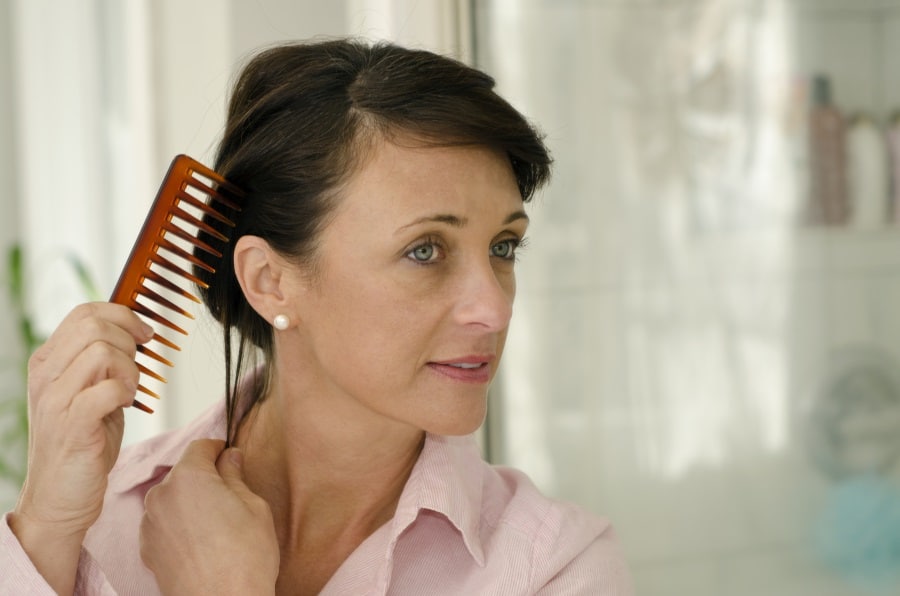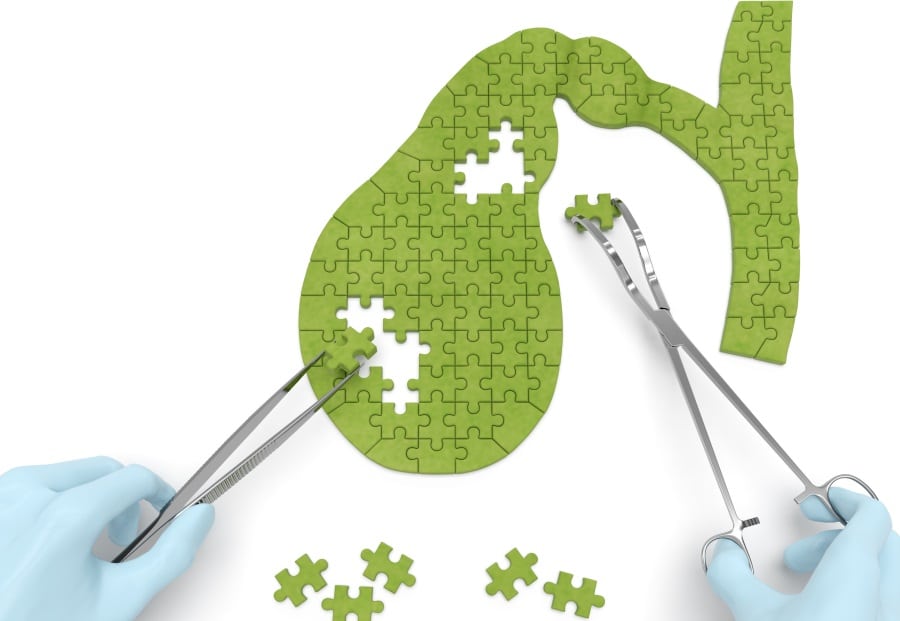
Losing Your Locks?
Women: Is your hair getting thin and wispy, or are you even getting bald spots? If so, don’t despair—fight back.
We tend to think baldness is a men’s issue. From the comb over to the buzz cut, guys’ ways of dealing with hair loss—and moving on—are all around us. But did you know 40% of women experience hair loss after menopause? And about 13% of us experience it way before that. Unfortunately, when a woman starts losing her locks, she typically thinks she’s the only one. Too many of us suffer over our scalps in silence, embarrassed, and sure we’ll never feel beautiful or sexy again.
So I want to bring female hair loss out of the closet. If it’s happening to you, you’re in good company. And it doesn’t have to doom you to a life of low self-esteem and hiding in the shadows. There are natural ways to treat and deal with it. There is help, and there is hope! The first step is figuring out what type of hair loss you have.
The Most Common Root Issue
The majority of women who lose hair have female pattern baldness (FPB)—our much-less-discussed counterpart to male pattern baldness. This is when your hair slowly thins on top. You probably won’t notice any shedding because it’s a gradual process of hair follicles shrinking, producing finer hair, and eventually producing no hair at all. For many women, this leads to suddenly realizing that your hair has gotten thinner. Not a good day! And it’s usually followed by many more days of obsessively examining your scalp in the mirror and panicking over how much worse it might get.
FPB is actually a hormonal issue. Susceptibility to it is inherited, and stress can make the problem worse. The hormone DHT, which is a derivative of testosterone, seems to be the culprit. As you probably know, women have male hormones, called androgens, just in much smaller amounts than men do. But though we have a lot less of them, they’re still critical to our health. (FPB is also referred to as androgenetic alopecia, with the word alopecia simply meaning hair loss.) Since hormonal imbalances drive FPB, it’s no coincidence that it often starts during menopause.
Other FPB triggers include pregnancy, taking birth control pills, and ovarian cysts. So what do you do if you have FPB? Your first line of defense should be finding a doctor who knows about this condition and works with natural hormones. Underlying your FPB might be male hormones that are too high or female hormones that are too low. Countless women with FPB have taken natural hormones and found that their luscious locks returned—along with their youthful vigor, sex drive, and sense of well-being.
Less Common Causes
There are three other types of hair loss, or alopecia, which are much less common and primarily caused by autoimmune disorders. These are:- Alopecia Areata: The loss of a patch of hair on your head.
- Alopecia Totalis: The loss of all the hair on your head.
- Alopecia Universalis: The loss of all your head and body hair.
- Anemia (Iron deficiency)
- A variety of prescription medications (including antidepressants and anti-inflammatory drugs)
- Big alterations in diet
- High fever and serious infections
- Intense emotional turmoil
- Massive weight loss
- Severe injuries
- Sudden hormonal changes (often brought on by childbirth or menopause)
- Thyroid issues
Eat:
- Ground flax seeds, walnuts, fish (the best being wild salmon and sardines), and avocados to ensure you’re getting lots of omega-3 fatty acids.
- Plenty of nuts for biotin
- Iron-rich green leafy vegetables, cashews, figs, and berries
- Bone broth and high-quality collagen supplements
Consider Supplementing With*:
- B-complex vitamins, vitamin C, and vitamin E
- Silica
- Zinc
- GLA (gamma linoleic acid)
- MSM (Methylsulfonylmethane)
Reduce Stress
Stress can contribute to virtually all types of hair loss. And hair loss definitely causes a woman stress! So do yourself and your hair a huge favor by de-stressing in any and all forms that work for you. Things like yoga, mediation, long walks, hot baths, good books, or playtime will make you feel better and help you heal. If hair loss is an issue for you, just remember that millions of other women are experiencing it too. So stop hiding and start healing—it’s time for you, and your life, to feel beautiful again!
Keep thinking big and living bold!








